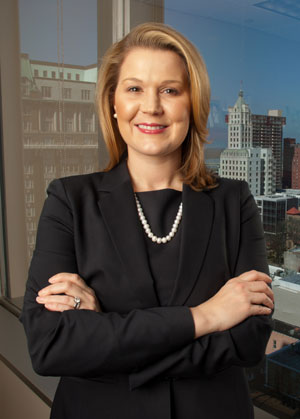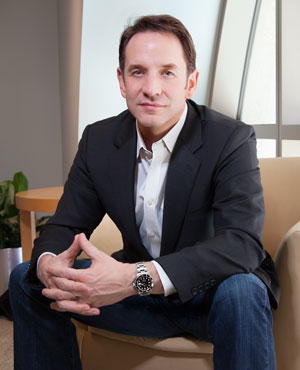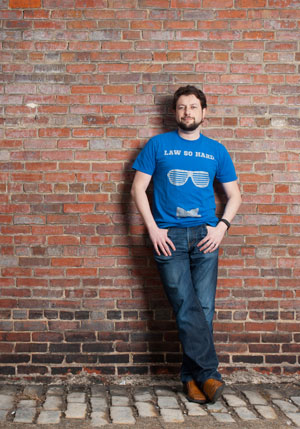Some law firms look outside law practice to avoid their 'Kodak moment'

Photo Illustration by Stephen Webster
Kodak once enjoyed a virtual monopoly, controlling 90 percent of the film market and 85 percent of the camera market. However, as the lesson goes, the old-school company declared bankruptcy in 2012, and it sold most of its intellectual property to the likes of Apple, Google, Microsoft, Samsung and new-age others who had been more proactive in embracing digital photography. The 2016 Report on the State of the Legal Market (PDF) hypothesizes that, like Kodak, lawyers are reluctant to stray too far from the business model that has served them so well in the past.
Not that law firms are looking at extinction. “Firms at the highest end of the market will always be sought out for critical bet-the-company work,” the study stresses. “But the range of activities that only [original emphasis] traditional law firms can undertake will continue to narrow as alternative service providers become more expansive in their capacities and as software development increases the automation of once heavily labor-intensive activities.”
Or law firms can try to beat these alternative service providers at their own game.
Editor’s Note: Starting in 2011, the ABA Journal initiated a series of reports on the shifting paradigm of law practice. This series looks at how the legal business is responding—and the legal profession often not responding—to pressures never before placed on lawyers and law firms: a maturing market, disruptive technology, economic recession and the rise of legal services competition.
This month’s article looks at three law firms that have created their own entities to bring technology to bear on how they practice law and what services they provide their clients. They are among a host of major law firms that are taking on development or modification of software options and changing the traditional lawyer-client relationship.
There is also online-only content for the series, available here.
Recent Paradigm Shift Feature Stories
October 2015
What the jobs are: New tech, new client needs create a new field of legal operations
September 2015
Roundtable on change and challenge in the business of law
February 2015
Model program brings holistic solutions to divorce
In recent years, several of the largest firms in the country have gone outside the traditional model to explore ways of using technology to enhance the practice of law and deliver services to their clients. In doing so, some firms have even invented tools and methods that allow clients to rely less on outside counsel.
Going outside the traditional construct has also resulted in a modification of the traditional attorney-client relationship. In some cases, clients are becoming more involved with firmwide decision-making, while firms are taking a more active role in clients’ day-to-day operations. In some instances, firms are even changing client business processes entirely and coming up with a new model.
“Kodak didn’t see how digital was going to reinvent its industry,” says Dan Jansen, who is an entrepreneur, the mayor of Mountain Village, Colorado, and a professional services consultant who heads Dentons’ NextLaw Labs, a wholly owned subsidiary focused on creating, developing and selling legal technology tools to help change the practice of law (see “Beyond Imagination”).
“I’ve been involved in many organizations,” he says, “and it’s very difficult to reinvent from within. When you’re inside, you get focused on the traditional value chain and the metrics that define your business. Sometimes you need an outside perspective.”
From special teams to separate businesses, some firms are gaining that perspective, looking well beyond the bounds of legal practice.
CLIENT KEEPER
There’s a cliché in the legal profession that clients hire lawyers, not law firms. In that vein, if the relationship is strong enough, then clients will often follow a lawyer from firm to firm.
Thanks to a piece of proprietary legal technology, however, that wasn’t the case at Baker, Donelson, Bearman, Caldwell & Berkowitz when the firm lost one of its leading partners. The firm, which declined to identify the partner or client in question except to say that the client was an automobile company, used the automated document software ContractExpress from Business Integrity to keep its client in the fold.
“They told us that ContractExpress was one of the reasons they stayed with us,” says Meredith Williams, chief knowledge management officer at Baker Donelson in Memphis, Tennessee. “But it wasn’t just CE, but the way we used it to help them save money and time.”
Seeking new ways to develop technology, the firm created a venture fund to help forge partnerships with legal service providers and to invest in promising new companies. The fund, which consists of about eight full-time members, draws on people from throughout Baker Donelson to brainstorm about changing the way the firm delivers legal services. According to Williams, during the just-completed fiscal year the fund had 80 timekeepers.
“The fund allows us to challenge lawyers to think differently,” Williams says. “We’re focused on how we can take our clients to the next level.” She says that attorneys who come up with a tool or solution for a client get credit on their billable hours.
The group has been responsible for creating a custom portal and dashboard for its clients with ContractExpress. These innovations have allowed Baker Donelson’s clients to see every single contract generated while streamlining their workflow by standardizing their forms.

Meredith Williams. Photo by David Mudd.
Williams says the firm has done this for roughly 50 clients, ever since adopting CE more than five years ago. Back then, the firm used HotDocs, but Williams says Baker Donelson wanted something that was integrated with Microsoft Word as well as MS SharePoint.
“We were looking for something internal, but we wanted to be able to share it with our clients,” she says. “Business Integrity was the only company to offer us that.”
Now the firm uses CE across the board, including for contract drafting, e-discovery and even estate planning. “Our attorneys have seen their hours redirected,” Williams says. “Instead of someone spending time drafting a document, we see them working more on client relationships or doing more customized work.”
In fact, the firm has a team dedicated to advising Baker Donelson attorneys, as well as outside clients, on how to maximize the capabilities of ContractExpress, including how to streamline a client’s workflow. “We’re able to really seek out and identify a lot of pain points for a lot of groups because we are embedded with them,” says Williams. “Last year, we developed 188 CE packages, both for clients and internally.”
The firm’s success with the software when it comes to streamlining workflow and business procedures has led to Baker Donelson’s most recent endeavor. Launched in January, LegalShift is a Baker Donelson subsidiary that consults with general counsel to figure out ways to automate legal processes and be more efficient. LegalShift uses legal practice management, as well as Lean Six Sigma, to advise businesses to better manage their legal portfolios while bringing down expenditures and costs. The subsidiary also provides clients with the BakerManage app suite.
As for ContractExpress, Williams says one of her main jobs moving forward is to figure out new ways for the firm to use it. In August the firm launched a mobile app with CE integrated into it that allows franchises to generate documents while out in the field with potential franchisees.
Internally the firm started using the software to help with its lateral hiring process. “We looked at our entire process of ‘onboarding’ and used CE to streamline it for lateral partner and associate hiring,” says Williams. “There are a ton of forms any lateral candidate has to fill out: HR forms, client matters and background checks, for instance. We can use CE to pull data from all sorts of places and have all the forms done quickly.”
Kent Zimmermann, a legal consultant with the Zeughauser Group in Chicago, says he hasn’t heard of a firm using its automated document system to streamline the lateral recruitment process like Baker Donelson has. And Ryan Turley, a partner at the Madison West legal recruiting firm in Chicago, says the same, but he points out that law firms have been relying more on technology in recent years, especially when it comes to accepting resumés and transcripts.
LEANING OUT
Of course, Baker Donelson isn’t the first firm to launch a business consulting subsidiary focused on applying principles of Lean Six Sigma to corporate clients. Seyfarth Shaw was an early convert to the philosophy, adopting it firmwide more than a decade ago. Robert Saccone emphasizes that Lean Six Sigma is more than just cost-cutting; it’s about the importance of processes and how they drive an organization to achieve efficiency.
“All organizations have inefficiencies,” says Saccone, who until this year headed SeyfarthLean Consulting. “We use our methodology to identify these inefficiencies and to map out the optimal way of getting work done. And we explore realistic use of technology, such as document automation and workflow systems, to make work consistent and easier.”
The subsidiary was formed in April 2014 so the firm could export its philosophy to law departments and companies without the constraints that come with running a law firm. Saccone, a nonlawyer, came aboard as CEO in January 2015 after spending 18 years in the legal-tech landscape, including a 4½-year stint as director of knowledge management technology at Goodwin Procter and a CEO role at XMLaw, a legal tech startup that became part of Thomson Reuters in 2009. (He left Seyfarth at the end of February.)
“SeyfarthLean Consulting grew out of internal efforts to improve our value proposition to our clients,” he says. “As clients increasingly asked if we could help with their own internal operations, the firm decided to stand up SeyfarthLean Consulting as a business consulting practice focused on solving bigger client problems.”
The main thrust of SeyfarthLean Consulting, according to Saccone, is process mapping and workflow optimization so that lawyers can devote more time to performing high-end legal work instead of doing repetitive, commoditized work that could easily be done by a computer.
For instance, in 2013 SeyfarthLean Consulting put into place processes to help Nike with its high-volume but largely routine transactional work, such as procurements. SeyfarthLean consultants worked with Nike to design the Transaction Solutions Center, a work-allocation process model that contains a risk matrix to determine which agreements can be automated and which need to be handled by a Nike lawyer. According to SeyfarthLean Consulting, the center has allowed Nike to reduce its contract turnaround time from an average of 15 days to fewer than three. Additionally, in the center’s first year, a third of its projects were completed in less than 24 hours.
“Most legal departments handle a range of matters; some are big and complex like M&A transactions, but most are volume—small requests and tasks like handling routine agreements,” Saccone says. “Without an efficient way of handling these routine tasks, they take time and focus away from the more complex and more valuable projects that in-house resources want to be focusing on.”

Robert Saccone. Photo by Len Irish.
Saccone emphasizes that the subsidiary does not practice law, but the majority of its work is in conjunction with the legal work of the firm. Additionally, the subsidiary is taking on an increasing number of projects from companies and businesses that are not clients of Seyfarth Shaw.
The primary tool the consulting group uses is SeyfarthLink, a Microsoft SharePoint-based platform created by the law firm in 2013. SeyfarthLean Consulting customizes it based on a client’s needs—all with an eye toward boosting efficiency. For instance, a client with a heavy litigation caseload would require customized tools so that it can keep track of all of its matters. But tracking cases is just the start of it, Saccone notes.
“Clients generally don’t have good methods or systems to help them capture the nuances and details of the cases they are handling, which is crucial to understanding and improving the value that both in-house resources and outside counsel are providing,” he says. “We help them define and capture this information using online databases and other tools that simplify processes, and then help them use the information to further tune processes.” Clients get data analytics tools, dashboards and fiscal transparency features so they can get real-time updates on costs and expenditures.
SeyfarthLean Consulting also develops tools for clients as needed, although Saccone stresses that it’s not a software development shop, per se.
“We develop and use technology in tiers,” says Saccone. “We have software developers that can solve complex problems that don’t have off-the-shelf solutions, and we also have a team of legal solutions architects that can bridge the gap between a client’s problem and the best technology solution available, whether our developers created it or we’ve partnered with others to provide it.”
LETTING CLIENTS IN
The attorney-client relationship forms the bedrock of the U.S. legal system and creates a strong bond between everyone involved. Despite that, law firms haven’t historically been known for letting clients take an active part in their internal decision-making process.
Dentons and Akerman are two firms that have thrown open the doors and tried to forge stronger partnerships with their clients—especially when it comes to technology.
When Dentons announced the formation of NextLaw Labs in May, the firm noted its advisory board would consist of thought leaders within the legal industry as well as the firm’s clients. According to Jansen, the lab has invitations out to several general counsel, and his hope is that the board—which at press time consisted of former Kia counsel Casey Flaherty; law professor William Henderson of Indiana University (who helped create the Journal’s Paradigm Shift series); and IIT-Chicago Kent College of Law professor and ReInvent Law co-founder Daniel Katz—will eventually consist of about 10 members.
In the meantime, NextLaw Labs is soliciting input from clients to determine what tools it should invent and what companies it should invest in. “We’ve received over 100 ideas since we started,” Jansen says. “Of the top 10 opportunities that we’re working hardest on, they all came from either a client or a firm lawyer, and almost all of them involve the ability to do expert legal research faster, cheaper and better.”
Another firm that has taken a collaborative approach to creating technology is Akerman. When it first announced its R&D Council in April 2014, it was notable because it promised to be an active collaboration between firm lawyers and clients to create new tools and implement innovative ideas. The question was whether Akerman would actually give clients a real voice on the council, or if it would give out a few token seats to some clients before treating them like silent partners.

Martin Tully. Photo by Wayne Slezak.
Martin Tully, co-chair of Akerman’s data law practice and a member of the R&D Council, says the firm was serious when it gave clients an opportunity to help steer the council and decide what projects it would undertake. The council consists of about a dozen members, and it’s nearly evenly divided between clients and firm lawyers.
Tully joined Akerman in August 2014, six months after the firm opened its Chicago office. He says one of the first things he did was ask to join the R&D Council. “The firm is very innovative, and the idea of taking a nontraditional approach to the delivery of legal services was very attractive to me,” says Tully. “I knew they had formed this R&D Council and I wanted to get involved.”
In November the council unveiled the Akerman Data Law Center. The center is actually a Web-based tool that tracks the data privacy and security laws of all 50 states and the federal government. It is one of the first things created by the R&D Council. (In July, the council announced creation of an interactive tool that helps appellate advocates prepare for oral arguments.)
According to Tully, the data law center evolved from client concerns, not just about cybersecurity and privacy, but also about data retention laws and how to keep track of them and be compliant with them at home and abroad.
“Companies are either unable to keep up with what the rules are or they are spending lots of money to come up with static summaries of the rules that then need to be constantly refreshed and updated,” Tully says. “We tried to figure out how to leverage our nonlegal service provider relationships to drive down that cost and be able to interact more with clients by bringing our expertise into the fold, adding new value to our client relationships.”
According to Tully, the subscription-based tool, developed in conjunction with Thomson Reuters and Neota Logic, resembles the popular Turbo Tax product. It asks users questions to clarify what they need help with, then uses decision trees and logic gates to come up with an accurate answer.
“The tool utilizes Thomson Reuters’ research, Akerman’s expertise and Neota Logic’s online portal,” Tully says. “Eighty to 90 percent of the time, users should be able to get an answer without having to speak with a lawyer.”
In case a user has a problem so complex and unique that legal assistance is required, Tully says, there will be an option to call a lawyer at Akerman, and the cost would be tailored to the needs of the client. He claims that Akerman Data Law Center clients can reduce legal fees by more than 80 percent compared to the traditional billable hours.
Tully hopes the tool will be ready to launch this spring. In the meantime, he anticipates that the council will look at solving the original problem posed by its clients—foreign and domestic data retention laws. On that front, he says, he isn’t sure whether the firm would create a new tool or expand the data law center’s capabilities.
“We’ve had several clients ask for something that would help them with data retention laws,” Tully says. “We plan to expand how we use our new technology to address these other issues. The Akerman Data Law Center model is adaptable to many areas with varied regulatory requirements.”
In the meantime, Tully will continue looking at innovative ways of delivering legal services, all the while balancing his other job as mayor of Downers Grove, Illinois—a Chicago suburb. Like Jansen, Tully says his firm encouraged him to keep his mayoral job.
“Twelve years of municipal service in a leadership role has taught me a lot,” says Tully. “Local governments are being forced to do more and more with less and less. That has forced us to think differently and be innovative. We’re doing the same thing with the R&D Council.”
A SKEPTIC WON OVER
These are approaches that even a legal technology skeptic like Keith Lee finds have merit.

Keith Lee. Photo by David Mudd.
The Hamer Law Group attorney and editor-in-chief of the Associate’s Mind blog says it’s important for lawyers to approach technology the way they would any case or matter—with extreme skepticism and an understanding that there are always things that lie beneath the surface.
Lee of Birmingham, Alabama, says he often distrusts legal tech companies that say they can solve all of a lawyer’s or client’s problems. To Lee, that’s impossible: Because law firms vary so much in size and quality, and practice areas each have their own unique sets of problems, it’s folly to suggest that there might be a one-size-fits-all solution.
But it’s a different story if the lawyers themselves are the ones developing tools for clients to use to make them more productive, efficient and less reliant on outside counsel.
“It’s not much of a stretch that big firms, especially ones with foresight and support from management, would begin to develop certain tools designed to provide services to clients,” Lee says. “After all, who knows a client’s processes or workflow better than the actual lawyers who are already providing legal services for them?”
He notes that it’s perfectly fine to use software to automate some parts of the process so that outside lawyers can provide more control and information to clients and allow them to make their own decisions.
“It certainly makes sense for the firms to be creating the tools,” Lee says, “as opposed to some people from Silicon Valley who don’t know about what law firms do and what problems clients have.”
This article originally appeared in the April 2016 issue of the ABA Journal with this headline: “Tech Trekkers: Some law firms travel outside law practice to avoid their ‘Kodak moment’.”
Correction
Print and initial online versions of “Tech Trekkers,” April, should have identified Martin Tully as co-chair of Akerman’s data law practice.The Journal regrets the error.



